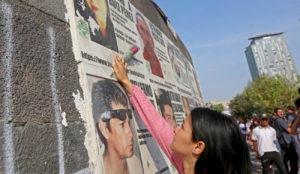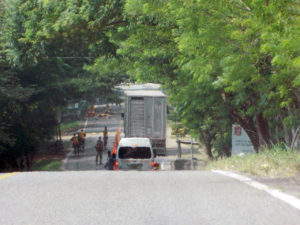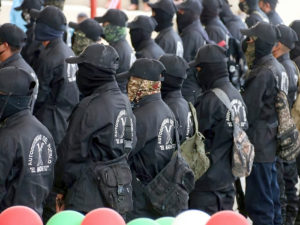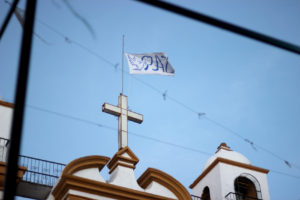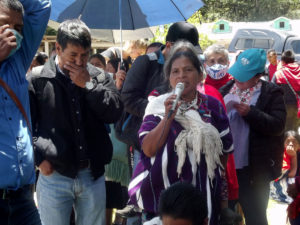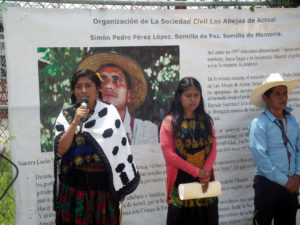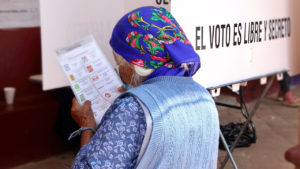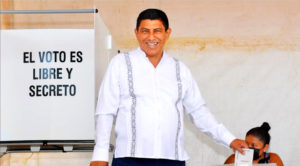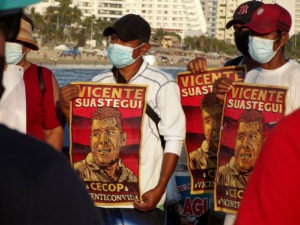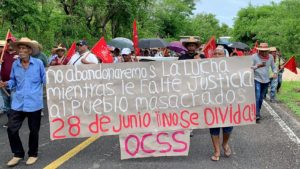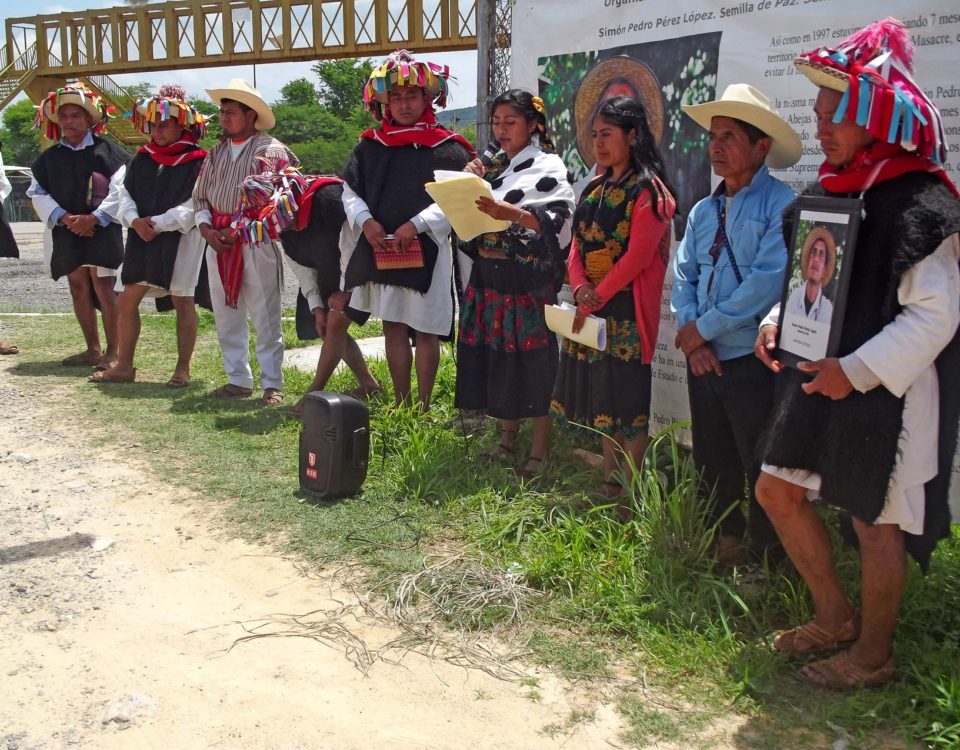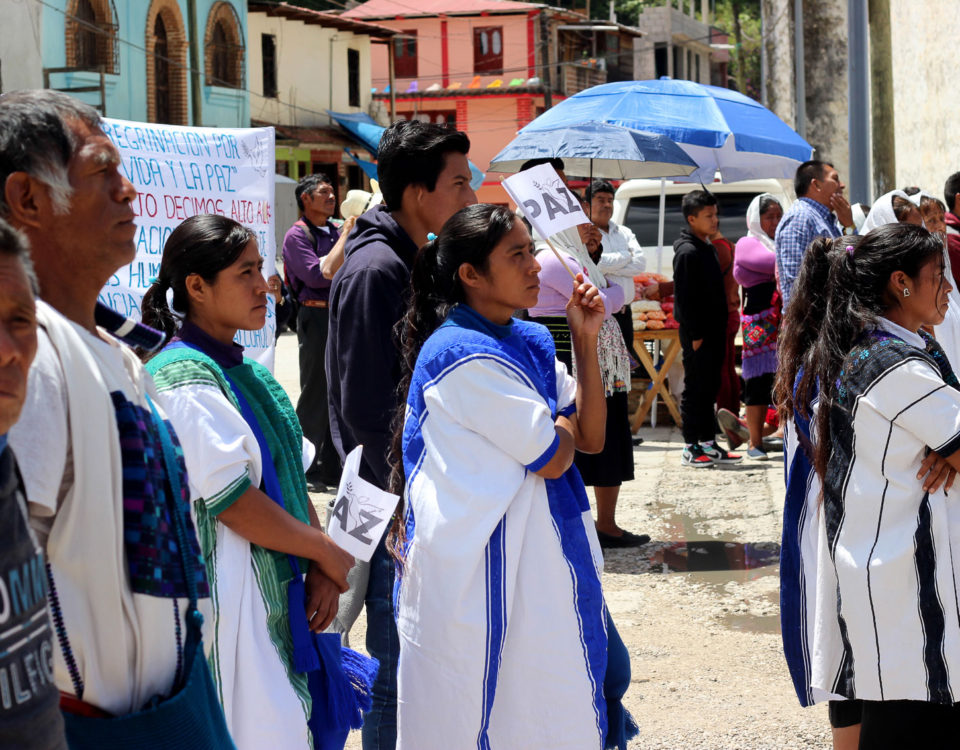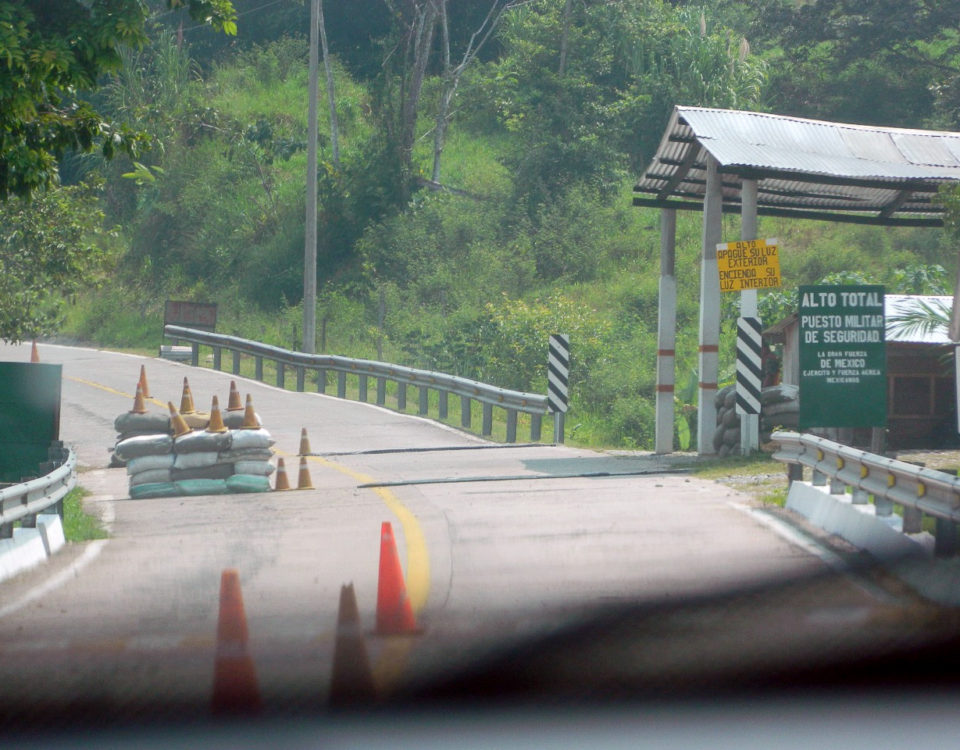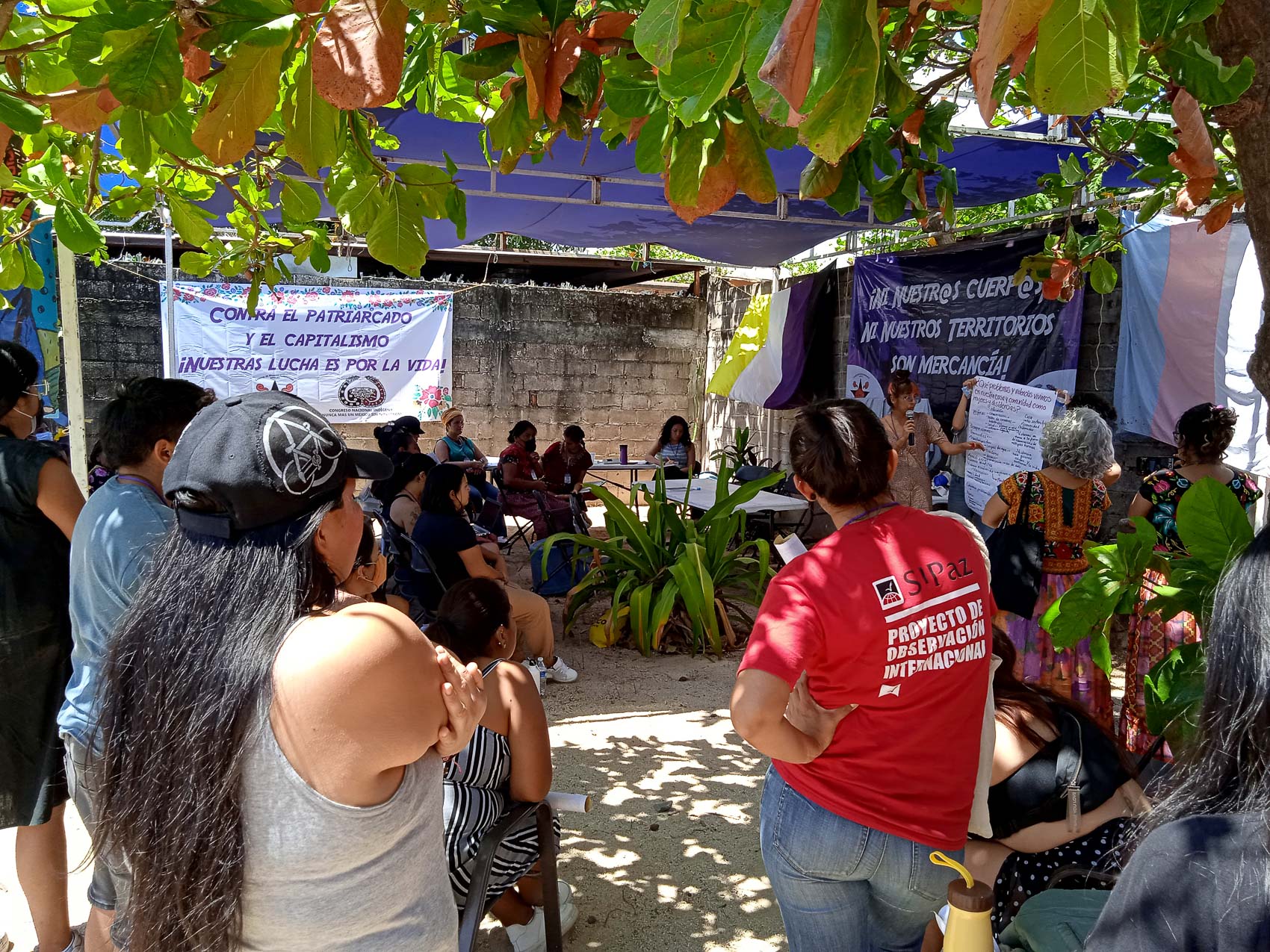
SIPAZ Activities (mid-February to mid-May 2022)
04/06/2022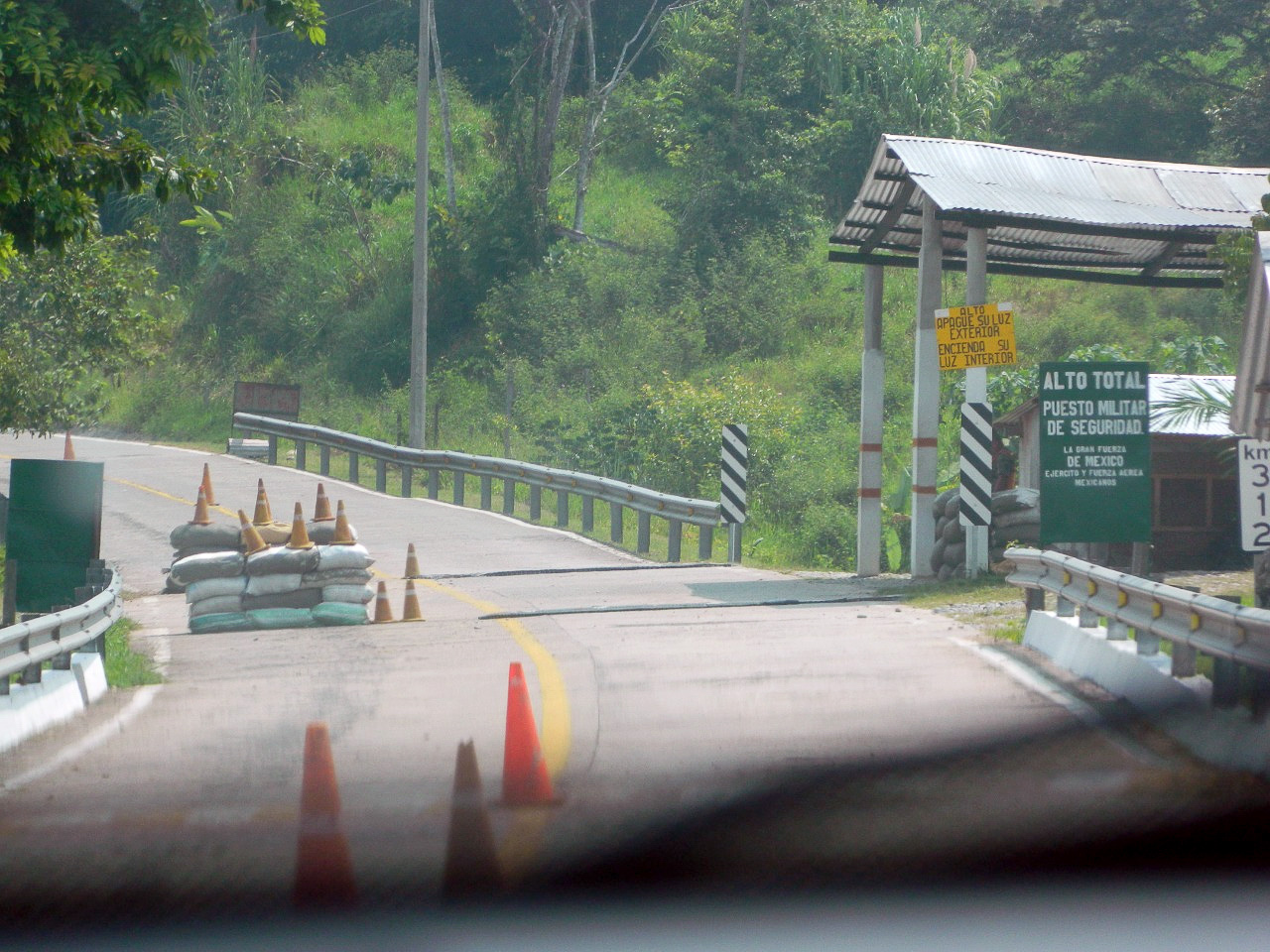
FOCUS: Migration as a justification for militarization and new strategies of territorial control
12/09/2022
I n what has come to be characterized as a human rights crisis in Mexico, there are many thematic axes in which no significant progress has been seen to date.
In May, according to data from the Ministry of the Interior, Mexico reached 100,000 missing persons. The Movement for Our Disappeared clarified that it is an imprecise figure since there are many cases that have not been registered. Michelle Bachelet, UN High Commissioner for Human Rights, stated that only in 35 cases of registered disappearances have the perpetrators been convicted. She urged the Mexican government to “put an end to these human rights violations and abuses of extraordinary magnitude, and to vindicate the rights of the victims to truth, justice, reparation and guarantees of non-repetition.”
In the first semester, there were 12 murders of journalists, four cases of forced internal displacement and two of exile due to the absence of guarantees that allow them to carry out their work safely. There was a total of 331 attacks (26.59% affecting women). According to the organization Article 19, “the fact that every 14 hours the press was attacked in the first half of 2022 shows that violence against journalists and the media has not been stopped. On the contrary, the increase in lethal violence speaks of a worsening of the conditions of vulnerability (…). The persistent violence against the press emphasizes the absence of the authorities (…) which have been negligent and incapable of generating strategies that address the causes of violence against the press.”
In May, the first national meeting of Displaced Persons was held in Chilpancingo, Guerrero, with the participation of victims of forced displacement from Chiapas, Guerrero, Chihuahua, Michoacan, Quintana Roo and Mexico City. Victims assured that neither the previous governments nor the current one “have resolved our situation.” This meeting was an opportunity to reach agreements, including the importance of addressing the deepest causes of displacement.
In May, the Inter-American Commission on Human Rights (IACHR) and the Alliance for Self-Determination and Autonomy (ALDEA) asked the Mexican government to materialize the reform on the rights of indigenous and Afro-Mexican peoples since, at present, these peoples continue to be unable to fully exercise their rights and continue to face discrimination, poverty, marginalization and dispossession; all this, despite the fact that there are national and international laws and treaties that establish their self-determination. The IACHR stressed that “the main scenarios of confrontation have revolved around projects for the exploitation of natural resources and divergent interpretations between communities and state authorities or other actors on the implementation of consultation and prior, free and informed consent.” It urged “promoting spaces for dialogue and agreement (…) to address the various human rights issues and concerns in accordance with international standards.”
In June, during the event for the opening of the military archives to the Historical Truth and Clarification Commission and the promotion of justice for serious human rights violations committed between 1965 and 1990, General Crescencio Sandoval defended the army affirming that he has always been in favor of the Mexican people. He reported “that President Andres Manuel Lopez Obrador authorized the inscription of the names of soldiers who died during the Dirty War in the monument to the Fallen of the Armed Forces.” There was a demonstration against this and shouts inside the enclosure, because this decision was considered an offense. The National Human Rights Commission (CNDH) expressed concern when “it is intended to equate the victims of these violations with the soldiers who committed these violations and that, although they may have fallen in these actions, in no way can they have the same treatment of those who suffered harassment, arbitrary arrests, serious violations, extrajudicial executions, forced disappearance, torture, etc.”
Similarly, in June, three years after the deployment of the National Guard (GN) on the northern and southern borders for migration control purposes, several human rights organizations filed an amicus curiae before the Supreme Court of Justice of the Nation (SCJN) for Unconstitutionality Action 62/2019, pointing out that the migratory attributions of the GN are contrary to the human rights of migrants and subjects of international protection. They considered that “they are the result of the nature and composition of the GN as a militarized body, with more than 80% of its members coming from the military sector, as well as in structure, training and command.” They detailed that “of 99,946 members deployed (…), 15,822 were located in states bordering the United States and 9,298 members in states on the southern border.” This is without counting the members of the GN deployed to the interior of the country to carry out migration control and verification tasks; “in addition to having been assigned the protection of the Immigration Stations.”
Given the announcement by President Andres Manuel Lopez Obrador (AMLO) in August to integrate the GN into the Army, the Miguel Agustin Pro Juarez Human Rights Center (ProDH Center) warned that this decree, “in addition to being contrary to the Constitution, gives rise to a concentration of power in the armed forces that may represent a risk in the future.” The militarization strategy has been questioned for years as a result of the multiple cases where the presence of armed forces to combat organized crime has involved bloody results and serious human rights violations. The president’s position is worrying because he “assumes himself as the defender of the military and places himself against the victims”, La Montaña Tlachinollan Human Rights Center said.
CHIAPAS: Spiral of violence continues to cut through different geographies in the state
In recent months, clashes have been reported in the municipality of Frontera Comalapa, particularly in San Gregorio Chamic. Since July 2021, the Chiapas border area has been marked by violence stemming from the struggle for territorial control between criminal groups. Blockades, disappearances, kidnappings and confrontations with high caliber weapons have been reported. At least 30 missing persons have been registered. Due to the violence, hundreds of families have been displaced from their communities without the possibility of a prompt return.
Another area with media presence has been Pantelho. In May, a group of approximately 100 people from “El Machete” self-defense group took over the facilities of the State Congress to demand the dismissal of the municipal council elected in December 2021. This was after the current council president, Pedro Cortes, was retained and forced to sign his resignation after having fired the accountant Pedro Gomez from his position for an alleged misuse of public resources. In June, Pedro Cortes was arrested for his alleged participation in the disappearance of 19 people in this municipality in July 2021, who were last seen after being detained by “El Machete.” Cortes Lopez distanced himself from the disappearance of the 19 and accused “El Machete” of various crimes such as looting the municipal treasury. In July of last year, indigenous people from Pantelho decided to arm themselves to stop the siege of organized crime in their municipality, the 19 people detained being identified as participants or accomplices of the “Herrera Cartel”, which for more than 12 years has committed various crimes such as murders and forced disappearances, “but the government never intervened there”, Cortes said.
In an event that was covered by national and international media, in June, several armed and hooded individuals took control of a part of San Cristobal de Las Casas. According to videos, photos and eyewitnesses, they fired shots, burned vehicles and blocked streets for almost five hours. Meanwhile, several civilians hid in hotels, stores and schools, trying to call the authorities, but for hours neither the police nor the Army nor the National Guard came to arrest the armed people or help the trapped people, including children and girls in schools. When the police and military began to arrive, the armed groups had already withdrawn. Several sources explain that this conflict is about a dispute over control of the market, others link it to the Army’s announcement the day before that it would send some 500 soldiers to the Los Altos area. The municipal president of San Cristobal de Las Casas recognized that the city’s police forces are overwhelmed by these armed civilian groups, which is why he asked the state and federal authorities for help: “They outnumber us and outweigh us.”
Likewise, in June, an attempt was made to hold extraordinary elections in Oxchuc under the regime of uses and customs. It is the only municipality in Chiapas that achieved legal recognition of this form of election outside of political parties. In December 2021, a new election process began, but was cut short by violent events, including roadblocks, burning of houses and vehicles, as well as deaths and injuries. The new elections called in June were again truncated. From days before to weeks after, roadblocks and confrontations were reported in which there were armed confrontations, burned houses, as well as one person dead.
In another part of the state, in June the municipal president of Teopisca, Ruben de Jesus Valdez Diaz, was assassinated, a homicide that brings the number of mayors killed in the AMLO administration to 17. Diaz, a member of the Green Ecologist Party of Mexico, began his term in office last year, in a region in Chiapas driven by drug trafficking and other illicit activities. The State Congress appointed a Municipal Council. As council president they appointed Luis Valdez Diaz, Ruben’s brother and substitute for local deputy Jose Antonio Aguilar Meza, who is a cousin of Senator Eduardo Ramirez Aguilar. This caused the ire of the residents, as they point out that they were not consulted. They have set up blockades on some road sections. They demand that the former municipal trustee, Josefa Sanchez Perez, be appointed president because they affirm that she is the person who by law the position corresponds to.
Finally, in July, the Fray Bartolome de las Casas Center for Human Rights Center (Frayba) denounced the forced displacement of six Zapatista families and the burning of their houses and belongings in the Comandanta Ramona autonomous municipality. This, by ejidatarios from Muculum Bachajon “led by the ejido commissioner together with municipal police and civil protection agents.” Frayba said that this aggression “puts the Autonomy and free Determination of Peoples at serious risk and denotes a serious violation of the right to security, life and integrity.”
Defenders, journalists and children: among the most vulnerable sectors
In June, Frayba denounced “the criminalization and fabrication of crimes carried out (…) against Manuel Santiz Cruz, human rights defender and President of the San Juan Evangelista Human Rights Committee, of the San Juan Cancuc Parish, as well as Agustin Perez Velasco and Martin Perez Dominguez, all three, Tseltal indigenous [members of Believing People from the same parish].” It stressed that these arrests occurred in “a context of opposition to the development of the San Cristobal – Palenque Super Highway, which is part of the development of tourism megaprojects in the region imposed without prior free, informed and culturally relevant consultation” and when the Tseltal peoples “have also expressed their disagreement with the presence of the Mexican Army and the National Guard in their territory.”
Another example of criminalization is that of Father Marcelo Perez Perez, recognized for his work for peace and who has participated as a mediator in different conflicts, the most recent being that of Pantelho. In July, the State Attorney General’s Office (FGE) requested an arrest warrant against him. Father Marcelo expressed: “My heart is very much at peace, because I have not done anything wrong, on the contrary, I entered Pantelho on July 27th to tell the people that they are children of God and not to fall into the same violence.” It seems that this work “affects the interests of individuals and groups (…) It seems the reason for reacting with persecution, intimidation, threats and imprisonment”, the Diocese of San Cristobal de Las Casas said.
As for journalists, in May, Juan de Dios Garcia Davish and Maria de Jesus Peters Pino, who worked in Tapachula, decided to leave the country due to death threats and the lack of response from the authorities to guarantee their safety. Both journalists covered the issue of migration on the southern border. In June, the journalist Carlos Herrera Hernandez denounced threats by Jeronimo Ruiz Lopez, a leader of tenants in San Cristobal de Las Casas while he was covering the protest carried out by taxi and van drivers.
Finally, according to the Network for the Rights of Children and Adolescents of Chiapas, from January to June 2022, 281 cases of children and adolescents disappeared in the state, more than one disappearance per day. In addition, Chiapas ranks 8th in the crime of trafficking (exploitation) of children and adolescents in the country. From 2015 to May 2022, 1,739 cases of trafficking in this population have been documented, with 2021 being the year with the highest number of registered cases, with a total of 259. Eight of every ten victims are girls or adolescent women.
Initiatives seeking to counter violence
Pilgrimages have been held due to the growing wave of violence that has hit the state, in the northern part of the state (May), Chicomuselo (June), San Cristobal de Las Casas (June); and in a coordinated manner in at least eight municipalities in July. In the latter case, there were at least 10,000 people who demonstrated to demand peace. Believing People denounced “all the abuses and injustices that our peoples and communities experience, especially the violence, insecurity and territorial dispute caused by organized crime, in the face of which the authorities are overwhelmed, permissive and colluded by the control that organized crime exercises in the national territory. There is also the threat and assassination of social leaders and municipal authorities, as well as threats to pastoral agents of our diocese” (See Article).
Appealing to international pressure, a delegation from the Inter-American Commission on Human Rights (IACHR) arrived in Mexico in July to follow up on the precautionary measures granted to 22 communities in the municipalities of Aldama, Chalchihuitan, and Chenalho. Frayba stressed that from April 2021 to date there have been more than 1,000 attacks with high-caliber weapons, resulting in three people killed and several injured, including children; in addition to forced displacement of at least 4,399 people.
OAXACA: New Governor Will Face Multiple Problems
In June, with 59.7% of the votes, the MORENA candidate, Salomon Jara Cruz, won the gubernatorial elections. The process was marked by the indifference of the voters, which was reflected in high abstentionism, around 62% of the electorate, and by the burning of ballots in various polling stations in municipalities with social conflicts and affected by disasters. The election registered a high level of violence, with six murders and 43 assaults.
The next governor of Oaxaca faces a worrying situation, due to the dispute over territory between seven criminal groups; the increase in drug trafficking, homicides and femicides (with a total of 62 violent deaths of women so far this year; 644 to date in the outgoing administration). The state, which has 4.1 million inhabitants, is in first place in terms of poverty, educational backwardness and lack of access to health services. In addition, it is the second territory with the worst job creation data.
Similarly, it is the entity with the highest number of murders of agrarian, community and social leaders in the country, with a total of 13 crimes in the last 19 months, of which six have occurred this year. This despite the fact that it ranks first at national level with respect to human rights defenders under the Mechanism for the Protection of Human Rights Defenders and Journalists
In the most recent incidents, in May, Afro-Mexican land defender and peasant leader of the Democratic Civic Union of Neighborhoods, Colonies and Communities (UCIDEBACC), Humberto Valdovinos Fuentes, was killed by two people on a motorcycle.
In July, David Hernandez Salazar, defender of the territory against the Interoceanic Corridor in the Tehuantepec Isthmus and municipal agent of Puente Madera, was physically and verbally attacked. He has participated in actions to denounce and reject the CIIT (Tehuantepec Isthmus Interoceanic Corridor).
Certainly, the defense of land and territories continues to be one of the main concerns of many organized processes. In June, the Federal Electricity Commission (CFE) canceled the electricity supply contract it had with the French Electricite de France (Electricity of France, EDF), which implied the cancellation of the Gunna Sicaru wind farm. This decision was notified to the Zapotec indigenous community of Union Hidalgo, which had the resolution of an injunction pending related to consultation on this project. The community members celebrated the news, “a milestone in the defense of the right to land, territory and natural assets of indigenous communities and for corporate accountability in Mexico and Latin America.” However, a month later, the Assembly of the Indigenous Peoples of the Isthmus in Defense of Land and Territory (APIIDTT) denounced the continuation of the project.
Likewise, in July, communities and agrarian authorities that have been affected by the San Jose mining project and mining concessions in Zapotec territory sent a public letter addressed to AMLO. They recalled that during the municipal and agrarian community assemblies they have decided “not to allow any prospecting, exploration and mining work in our territories”, which is why in 2015 the No to Mining for a Future of All Front was formed. In addition, they reminded the president that “at the beginning of this six-year term, he decreed the end of the neoliberal model, in addition to not granting any concessions to foreign companies. Neither of these two declarations has been fulfilled in the Central Valleys of Oaxaca.”
GUERRERO: Violence without truce
Violence has multiple expressions and the state of Guerrero has been experiencing them daily throughout its territory for several years now. According to the Executive Secretariat of the National Public Security System (SESNSP), 542 cases of intentional homicides were registered in the first five months at state level. Acapulco appears as the fifth city with the most intentional homicides in the country. In addition, the violence has reached the state capital: there is talk of a break in the truce between two organized crime groups, “Los Tlacos” and “Los Ardillos”, who are vying for control of Chilpancingo. This violence is also present outside the cities. In June, the Indigenous and Popular Council of Guerrero-Emiliano Zapata (CIPOG-EZ) denounced that the criminal group “Los Ardillos” had been attacking the Tula and Zicotlan communities in the municipality of Chilapa de Alvarez for three days, using exclusive Army weapons and explosives launched from drones. It claimed that the authorities “continue to be complicit, by not intervening, by not arresting ‘Los Ardillos’.”
The context can be even more critical for those who play a role in defending human rights. In July, the priest Felipe Velez Jimenez, was attacked by a group of men who shot him while he was going from Chilapa to Chilpancingo. The Multimedial Catholic Center (CCM) reported that, with Velez, six priests have been attacked so far in this six-year term of office. This fact occurs just when the Catholic Church is in a day of prayer and reflection to ask for peace in Mexico. The day began with the murder of the two Jesuit priests in the Sierra Tarahumara in June.
August marked the first year since the disappearance of defender Vicente Suastegui, in Acapulco, who was captured by armed men. The spokesman for the Council of Ejidos and Communities Opposed to the La Parota Dam (CECOP), Marco Antonio Suastegui declared: “Acapulco is now a sea of blood, it has become a huge clandestine grave. The citizens suffer from lack of security. The port is no man’s land, governed by drug trafficking groups and by paramilitary groups that in broad daylight disappear people, murder, collect fees, threaten people, harass and rape women.”
Disappearances are not a recent problem in Guerrero. In June, the 27th anniversary of the Aguas Blancas massacre was commemorated in which 17 peasants were murdered in that area of the municipality of Coyuca de Benítez by police and judicial agents. The Popular Revolutionary Army (EPR) affirmed that it was “a massacre resulting from a large-scale counterinsurgency operation, in which the entire State apparatus was prepared, before, during and after the crime.” “Those responsible from the structures of the State continue under the six-year protection of the Mexican State; justice cannot be reduced to protocol acts of forgiveness and public apologies from the perpetrator institutions, where victims and perpetrators are put on the same level and nature with the perverse intention of redeeming, purifying and honoring the perpetrator, in this case the Mexican Army”, it said. Tlachinollan declared that “forced disappearance has been a constant in the past and in the present, as well as massacres perpetrated by police forces and the armed forces. (…) Our state is marked by blood and the absence of indigenous people and students who raise their voices. In Aguas Blancas, El Charco and the disappearance of the 43 students from Ayotzinapa, the counterinsurgent strategy was applied. What else do the walls of impunity hide?”

